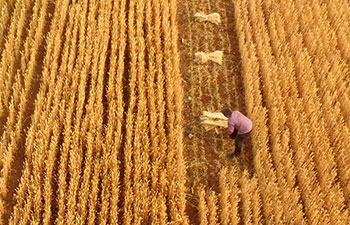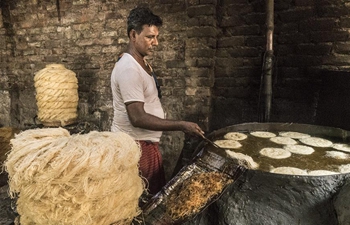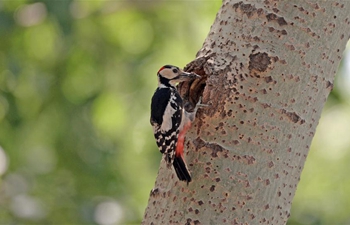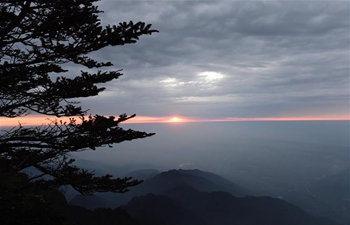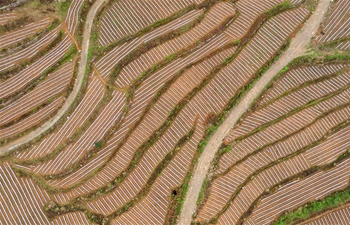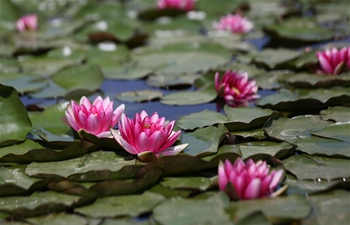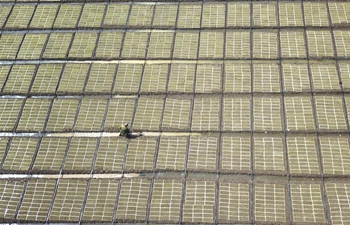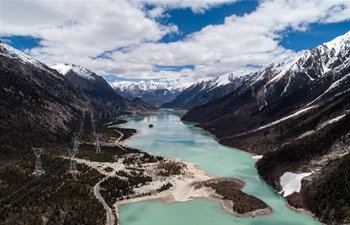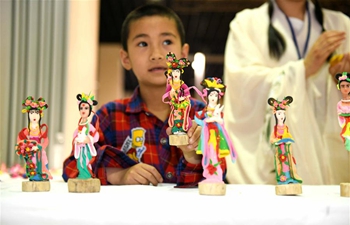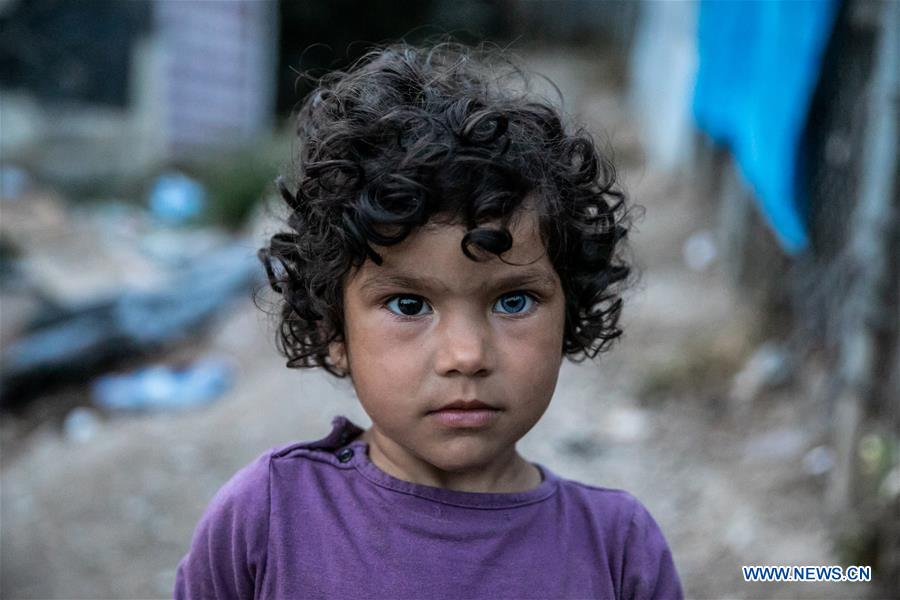
Photo taken on May 23, 2019 shows 10-year-old Ahmida from Afghanistan at the refugee camp on Samos, an island in the eastern Aegean, Greece. Four years after the start of the refugee crisis, thousands of refugees and migrants are still stuck on Samos. According to the representatives of the European Union the migration crisis that began in 2015 is over. But in Samos, the problem is far from over, local officials told Xinhua. At Vathy Reception and Identification Center, better known as the Samos refugee camp, 3,069 refugees, are still living today in very harsh conditions. Among them, 74 unaccompanied minor refugees and 329 asylum seekers, are waiting to move to other EU countries, Maria-Dimitra Nioutsikou, the center's director, told Xinhua. (Xinhua/Lefteris Partsalis)
by Natasha Pavlopoulou
ATHENS, May 27 (Xinhua) -- Four years after the start of the refugee crisis, thousands of refugees and migrants are still stuck on Samos, a Greek island in the eastern Aegean. According to the representatives of the European Union the migration crisis that began in 2015 is over. But in Samos, the problem is far from over, local officials told Xinhua.
At Vathy Reception and Identification Center, better known as the Samos refugee camp, 3,069 refugees, are still living today in very harsh conditions. Among them, 74 unaccompanied minor refugees and 329 asylum seekers, are waiting to move to other EU countries, Maria-Dimitra Nioutsikou, the center's director, told Xinhua.
In 2018 there were up to 8,500 people in the camp before being transferred to the mainland. As a former military base with capacity for only 650 people, the Samos refugee camp opened its gates in early 2016. Since then, thousands of men, women, and children found themselves in the so called "hotspot", after their long exhausting journey.
Barely two kilometres away from the Turkish coast, the Greek island of Samos -- along with other islands of northeast Aegean such as Lesvos and Chios -- are the main entry points to Europe.
At the peak of the crisis in the summer of 2015, thousands of people were reaching the island on a daily basis to continue their trip to central Europe. More than one million passed from Greece.
After the closure of Greece's northern borders and the EU-Turkey agreement in spring 2016, the number dropped, but still, many risk their lives to reach Europe.
Mohamed, a 24 years old refugee living in the Samos camp, arrived in Greece swimming from Turkey, along with a friend who did not make it and drowned shortly before reaching the Greek shores, he told Xinhua.
Lotfi Baker, a refugee from Palestine is also living in the camp with his wife Iman and their son Osama. He also managed to swim from Turkey in September and was then hospitalized for three days, exhausted by the effort. Lotfi's wife and son arrived in the nearby Chios island and the family was reunited shortly afterwards.
According to volunteer organizations, thousands of individuals and families, unable to find space in the overcrowded camp, live in difficult conditions in the so-called "jungle" adjoining it.
Greece still faces challenges in supporting thousands of people seeking refuge in Europe. The refugee crisis is far from over not only on Samos.
A total of 73,000 refugees and migrants are currently living in Greece, according to the latest data released earlier this month by the Secretariat for Crisis Management Communication of the Ministry of Digital Policy, Telecommunications and Media.
They include 3,774 unaccompanied minors, of whom 7.3 percent being under 14 years of age.
At the end of March 2019 there were 11,492 people at Greek reception and identification facilities on the Greek islands, compared with the 18,200 recorded in September 2018.
In the context of reducing overcrowding at the island hotspots, in 2018 some 29,090 people were transferred from the islands to mainland reception facilities.
In the first quarter of 2019, a total of 7,764 migrants and refugees came to Greece, signaling a significant decrease in flows compared to the same period last year.
At the same time, 1,827 migrants left the country, 37 under the EU-Turkey agreement, and there were 1,201 voluntary returns, while 589 people were relocated to other EU members for family reunification.
According to the official data, the flows of refugees and immigrants increased in Greece during 2018, compared to the previous year. In 2018, in total 32,115 people entered from the eastern Aegean islands, an increase of about 10 percent compared with 29,130 in 2017, while from the land border on Evros river in northern Greece, 15,814 people came, versus 5,577 in 2017, marking an increase of about 280 percent.
Also, in 2018, 66,970 asylum applications were registered, while the number in 2017 was 58,642.
